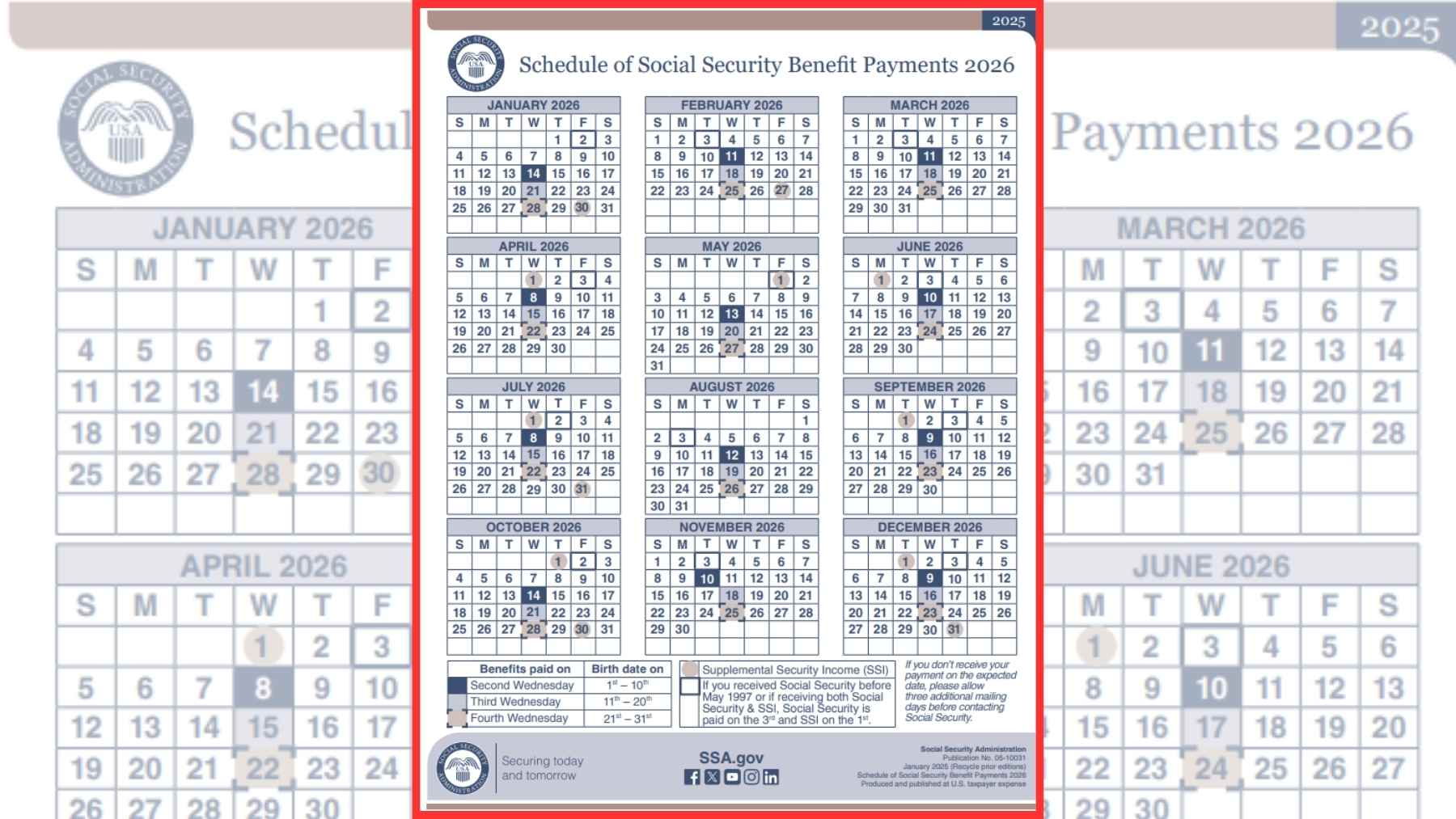With the world going digital, the Social Security Administration (SSA) is not excluding itself from this progress. The SSA is responsible for supporting millions of beneficiaries every month, with millions of payments needing to be coordinated and sent out according to a timely schedule, which the SSA follows fairly rigorously. However, the days of receiving a physical check are soon coming to an end, and online direct payments are the way forward. However, these groups may still receive a physical payment.
Coordinating millions of payments each month
The SSA supports approximately 70 million beneficiaries, meaning that every month requires apt and organized payments to beneficiaries distributed by the SSA. In order to ensure that all beneficiaries are paid on time and that the SSA does not fall into a logistical nightmare, payments are staggered throughout the month, with your payment date depending on a variety of factors.
The general payment schedule the SSA adheres to each month is as follows:
- The second Wednesday of the month: Birth dates between the first and the 10th of the month.
- The third Wednesday of the month: Birth dates between the 11th and 20th of the month.
- The fourth Wednesday of the month: Birth dates between the 21st and 31st of the month.
These dates are relevant for beneficiaries who receive Retirement benefits as well as beneficiaries who receive Disability benefits. However, if you are a Supplemental Security Income (SSI) recipient, SSI benefits will always be paid out to you on the first of the month, regardless of when your birthdate is. If you receive both SSI and retirement benefits, your retirement benefits are then instead paid out on the third of the month, regardless of when your birthdate is. Additionally, if you claimed your Retirement benefits from the SSA before May 1997, you are also always paid on the third of the month.
Physical SSA checks remain for this group
Social Security’s statement about the end of paper checks describes how the Administration plans to cease the distribution of paper checks by the end of September 2025. In March of this year, an executive order was signed by the U.S. Treasury and SSA to make all payments entirely electronic in order to streamline the process of distributing payments and to keep up with the digitalization of the payments world.
However, some beneficiaries will still be able to receive physical check payments from the SSA on a case-by-case basis. This is because the SSA recognises that specific individuals and groups may face barriers to embracing digital payments, and thus paper checks will continue to be distributed.
The following groups will still be eligible to receive paper check payments for their SSA benefits:
- Beneficiaries aged 90 or older
- Individuals with mental impairments and disabilities
- Those residing in remote geographic locations where financial infrastructure is lacking
Important upcoming change for SSA beneficiaries
In addition to the SSA going fully digital (barring exceptions) at the end of this month, another important upcoming change that SSA beneficiaries should take note of is the announcement of the upcoming cost-of-living adjustment (COLA) statistic. This statistic determines by how much SSA beneficiaries’ monthly payments are raised in order to ensure that their benefits do not lose their buying power amidst inflation.
The new COLA is expected to be announced on October 15. According to reports, the new COLA is expected to be similar to last year’s increase, ranging between 2.5%-2.7%. Other slight changes which are expected to occur next month for SSA beneficiaries are that SSI beneficiaries will receive their November benefits at the end of October instead of the anticipated November 1 date due to the first falling on a weekend, meaning that benefits need to be advanced to October.
Disclaimer: This content is informational only and does not supersede or replace the SSA’s or IRS’s own publications and notices. Always verify any specific dates and amounts by following the direct links in our article to SSA.gov or IRS.gov, or by consulting your local SSA field office or tax professional.














